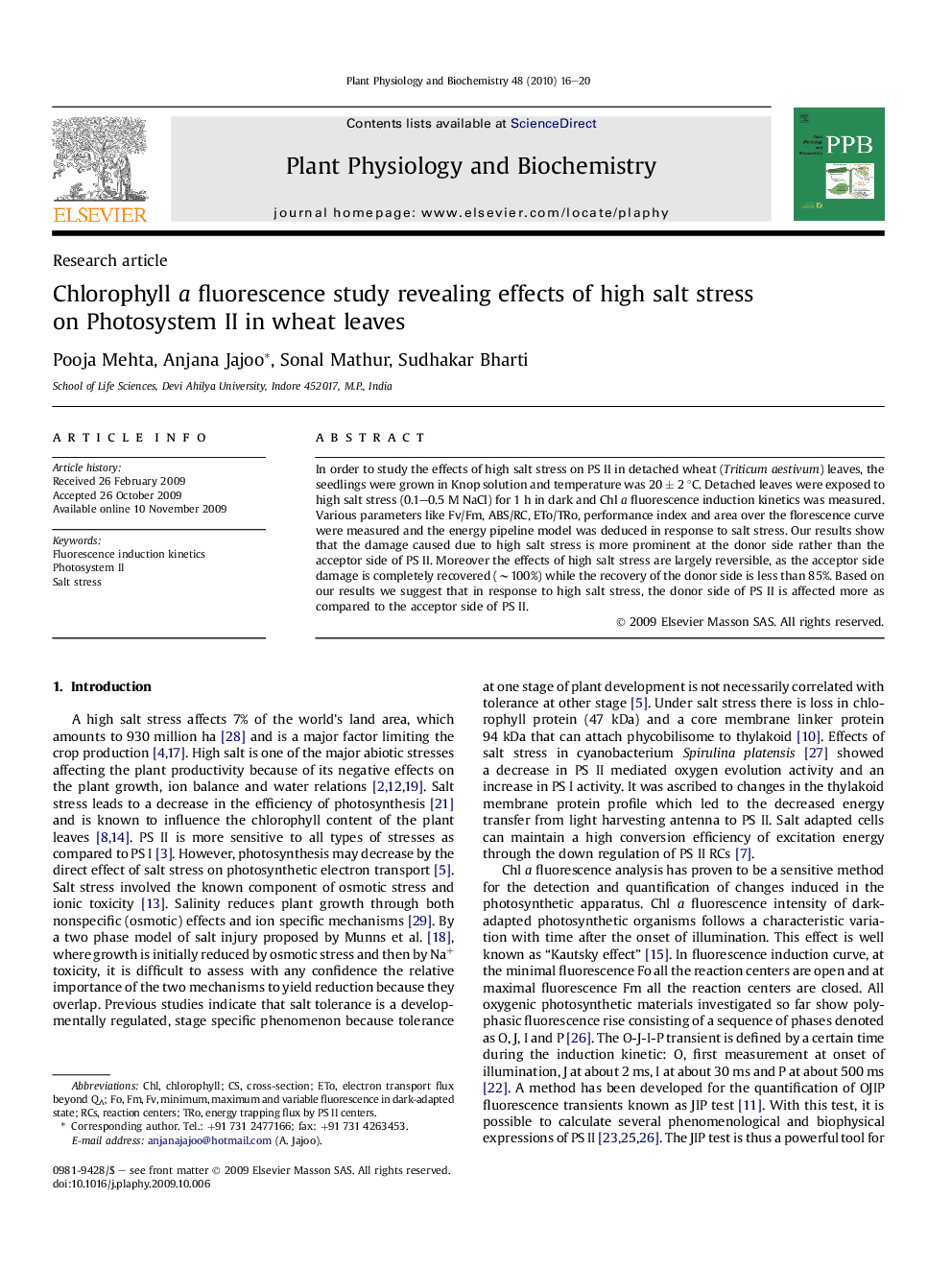| Article ID | Journal | Published Year | Pages | File Type |
|---|---|---|---|---|
| 2015217 | Plant Physiology and Biochemistry | 2010 | 5 Pages |
In order to study the effects of high salt stress on PS II in detached wheat (Triticum aestivum) leaves, the seedlings were grown in Knop solution and temperature was 20 ± 2 °C. Detached leaves were exposed to high salt stress (0.1–0.5 M NaCl) for 1 h in dark and Chl a fluorescence induction kinetics was measured. Various parameters like Fv/Fm, ABS/RC, ETo/TRo, performance index and area over the florescence curve were measured and the energy pipeline model was deduced in response to salt stress. Our results show that the damage caused due to high salt stress is more prominent at the donor side rather than the acceptor side of PS II. Moreover the effects of high salt stress are largely reversible, as the acceptor side damage is completely recovered (∼100%) while the recovery of the donor side is less than 85%. Based on our results we suggest that in response to high salt stress, the donor side of PS II is affected more as compared to the acceptor side of PS II.
